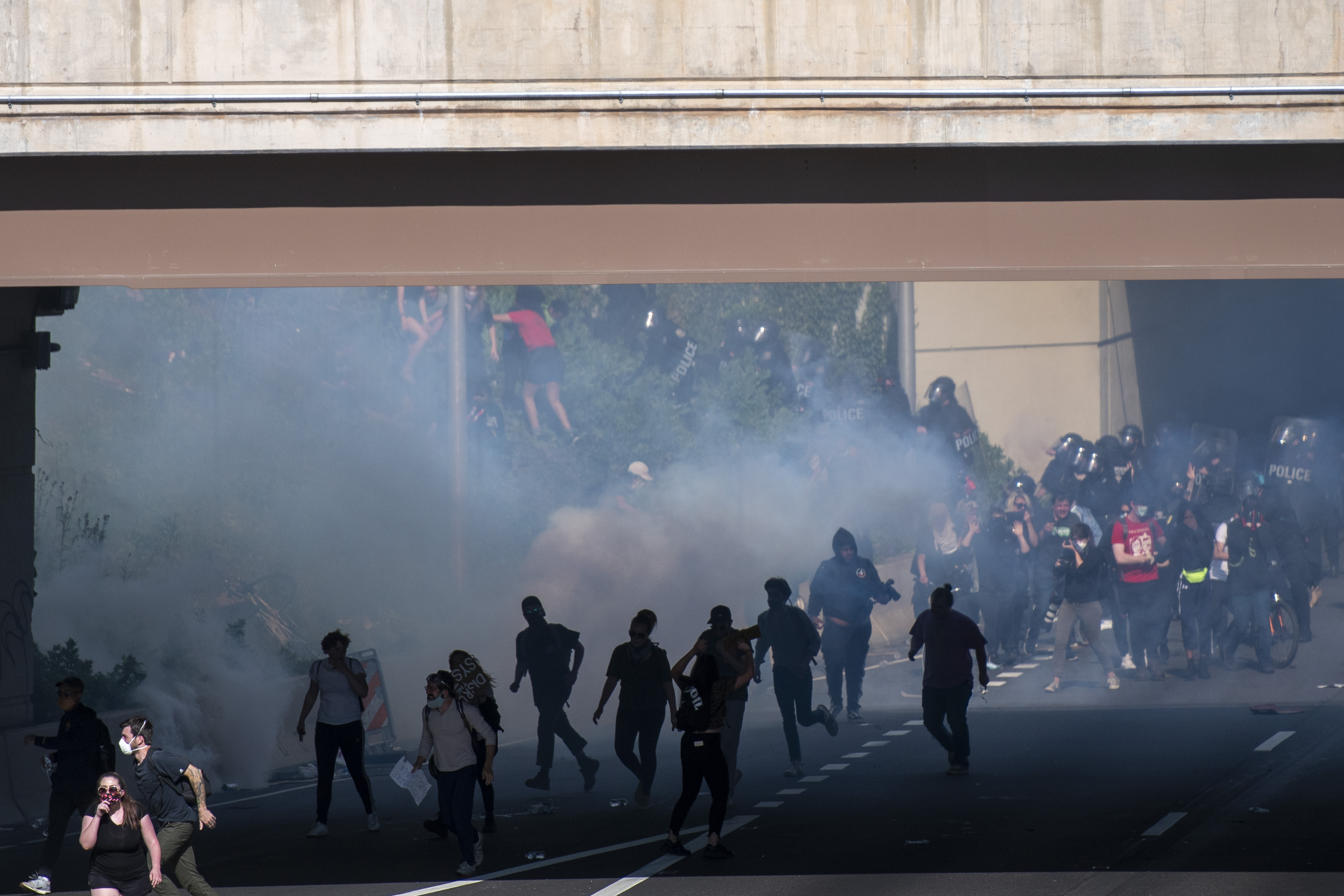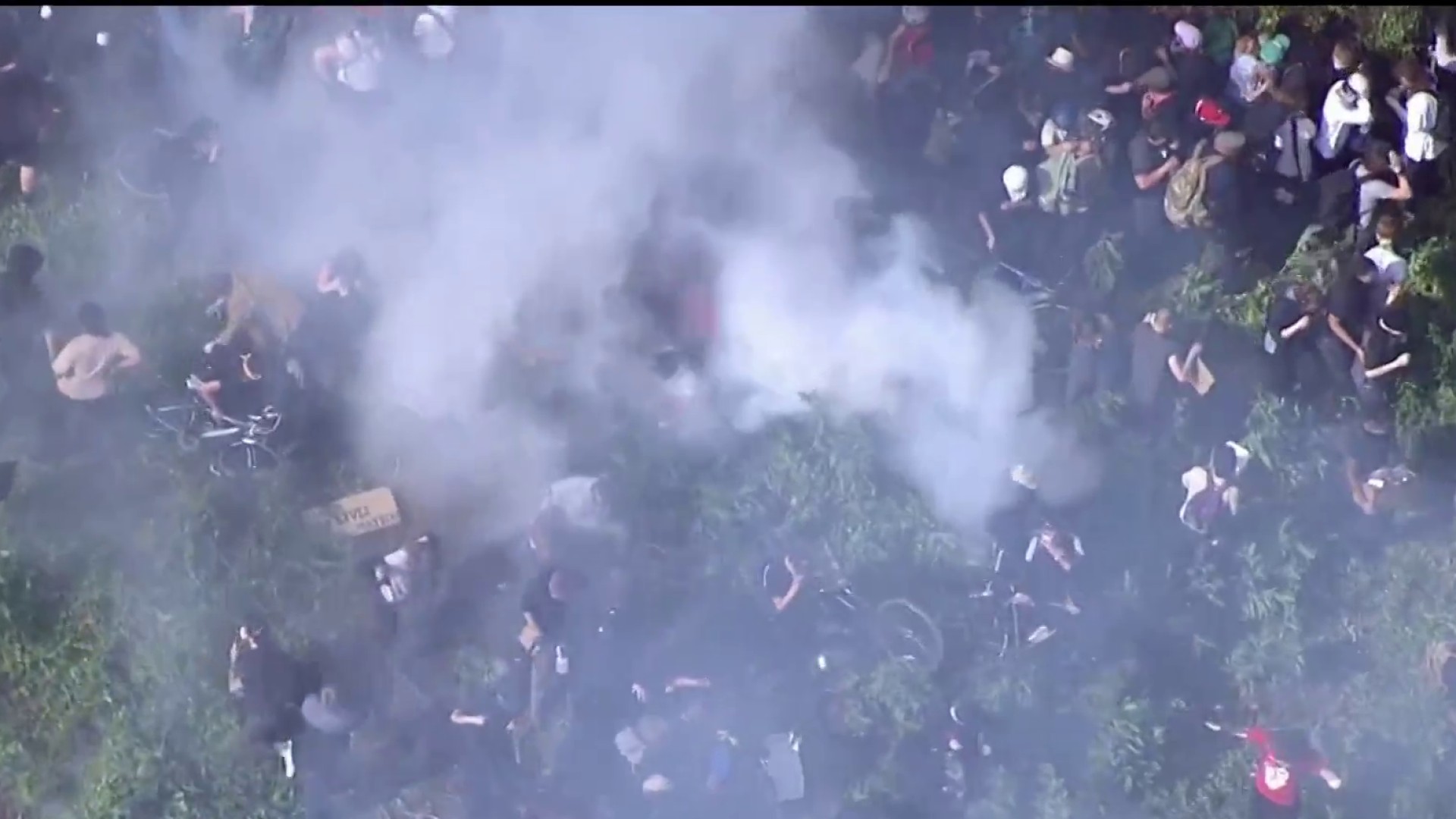A new report released Wednesday by the city controller criticizes Philadelphia's top leaders, including Mayor Jim Kenney, for their failure to properly plan for last year’s protests against police brutality and the unrest that followed.
“This lack of planning had cascading negative consequences,” the report says.
Controller Rebecca Rhynhart said that most of what went wrong in the days that followed the George Floyd protests -- looting, officers injured, inappropriate use of force by police -- was a result of poor planning and understaffing.
“The investigation found a real lack of planning and a lack of leadership among top city officials- up to the mayor,” Rhynhart said.
Get Philly local news, weather forecasts, sports and entertainment stories to your inbox. Sign up for NBC Philadelphia newsletters.
The five-month investigation was done by the law firm Ballard Spahr and security consulting firm AT-RISK International at the request of the controller. It cost taxpayers $150,000.
This is the second such after-action report from the summer unrest that points out just how unprepared police were to deal with the protests and violence that immediately followed it. The first report, released in late December, was ordered by the mayor and done by law firm Montgomery McCracken Walker & Rhoads and consulting firm CNA.
Some of the main findings of the controller’s report include:
• The city disregarded blueprints for handling and coordinating large-scale protests, including previous ones against police-involved shootings.
• The city’s fire commissioner, who also serves as head of the Office of Emergency Management, was out of town the day of the first protest and saw his role in the planning as limited.
• The mayor left the decision to use tear gas to the police commissioner, who the Controller says was comfortable using the chemical munition given her prior experience with it in Portland. (The report says tear gas had not been used in Philadelphia for crowd control or protests since the MOVE bombing in 1985.)
• The department lacked the manpower and transportation to arrest looters, allowing the looting to continue without challenge for hours.
The investigation included interviews with Police Commissioner Danielle Outlaw and other top command staff within the department. But according to Rhynhart, Mayor Kenney had “too rigid” of demands for an interview.
“The terms given to Ballard for the interview were that the questions needed to be provided in advance and then any follow-up questions from a question had to be submitted in writing to be responded to at a later time,” Rhynhart said. “And Ballard determined that wasn’t a true interview. That didn’t meet the spirit of an interview and therefore did not want to move forward with that.”
NBC10 reached out to Mayor Kenney's office for a response. City spokesman Mike Dunn said the mayor was not available for an interview. But, Dunn issued a statement that criticized the controller’s report as “duplicative” and “repugnant.”
Dunn said the Kenney administration rejects “her unsubstantiated claims that the mayor and members of his administration did not exercise ‘leadership.'”
The administration also defended Fire Commissioner Adam Thiel, who also serves as head of the Office of Emergency Management. The controller criticized him in the report.
“Particularly offensive is her baseless claim that Fire Commissioner Thiel was hands-off during this period,” Dunn said. “The fact that the controller chose to make such an inaccurate claim about dedicated public servants is repugnant, and its lack of accuracy certainly calls into question the veracity of her other claims.”
The Controller’s investigation found that on May 29, 2020, when violent civil unrest had already broken out in numerous cities around the country, Philly Police declined the help of Pennsylvania State Police for the planned May 30 protests. In addition, police did not think then that the city’s Emergency Operation Center needed to be activated.
And despite the head of the city’s Office of Emergency Management, Thiel, having the authority to activate the Emergency Operation Center, he told investigators he thought the responsibility should be on the police.
The mayor could have also stepped in.
“According to the City’s emergency management doctrine, the mayor is the one ultimately responsible for any City emergency response,” the report said. “However, the investigation shows that he did not exercise the leadership that was necessary.”
It wasn’t until 7 a.m. on May 30 that Outlaw received the plan for the protests. At that point, she didn’t think there were sufficient people assigned and asked for more manpower. She also asked for the Emergency Operation Center to be activated.
Still, there was no contingency plan in case of unrest or looting. And neither mounted patrol nor anti-looting officers were dispatched, the report found.
“Because there was understaffing, police on the first night of looting in center city did not have adequate staffing to arrest and transport so looting went on for hours and that continued in the course of several days,” Rhynhart said.
The next day, according to the report, Outlaw asked Kenney about the use of tear gas. Keneny said he was opposed to it but told Outlaw “he would give her that authority if it was absolutely necessary.”
Then when police felt under siege in West Philly -- as protestors outnumbered them, burned police cars and threw bricks at police -- the commanding officer on the ground asked Outlaw if they should use tear gas. She gave the approval, but only for 52nd Street between Chestnut and Market streets, according to the report.
Police, however, threw tear gas canisters all the way down to Spruce Street, where uninvolved residents were overcome by tear gas in their own homes.
According to the report, Outlaw said she approached the West Philly scene at some point that afternoon, but she was not able to advance past 50th and Market streets.
“She noted that at that location – two blocks east of where officers were met with violence – the CS gas was thick in the air and ‘wafting,’” the report said.
Still, the next day on June 1, she was open to using the chemical munition again when protestors trespassed onto I-676.
“She stated that a Deputy Commissioner … called her to discuss the situation on the highway,” the report said. “According to her, the two discussed the potential use of CS gas, however, she said that she directed him to call her before deploying it.”
The deputy commissioner ended up ordering the use of tear gas, but did not check back in with the commissioner, the report said.
The report offers more than a dozen recommendations, including various training for how to respond to protests and civil unrest. It also calls for improved community policing and having an independent head for the Office of Emergency Management.
“In the end it’s the mayor we depend on to lead the city and to make decisions, to protect our people,” Rhynhart said.




